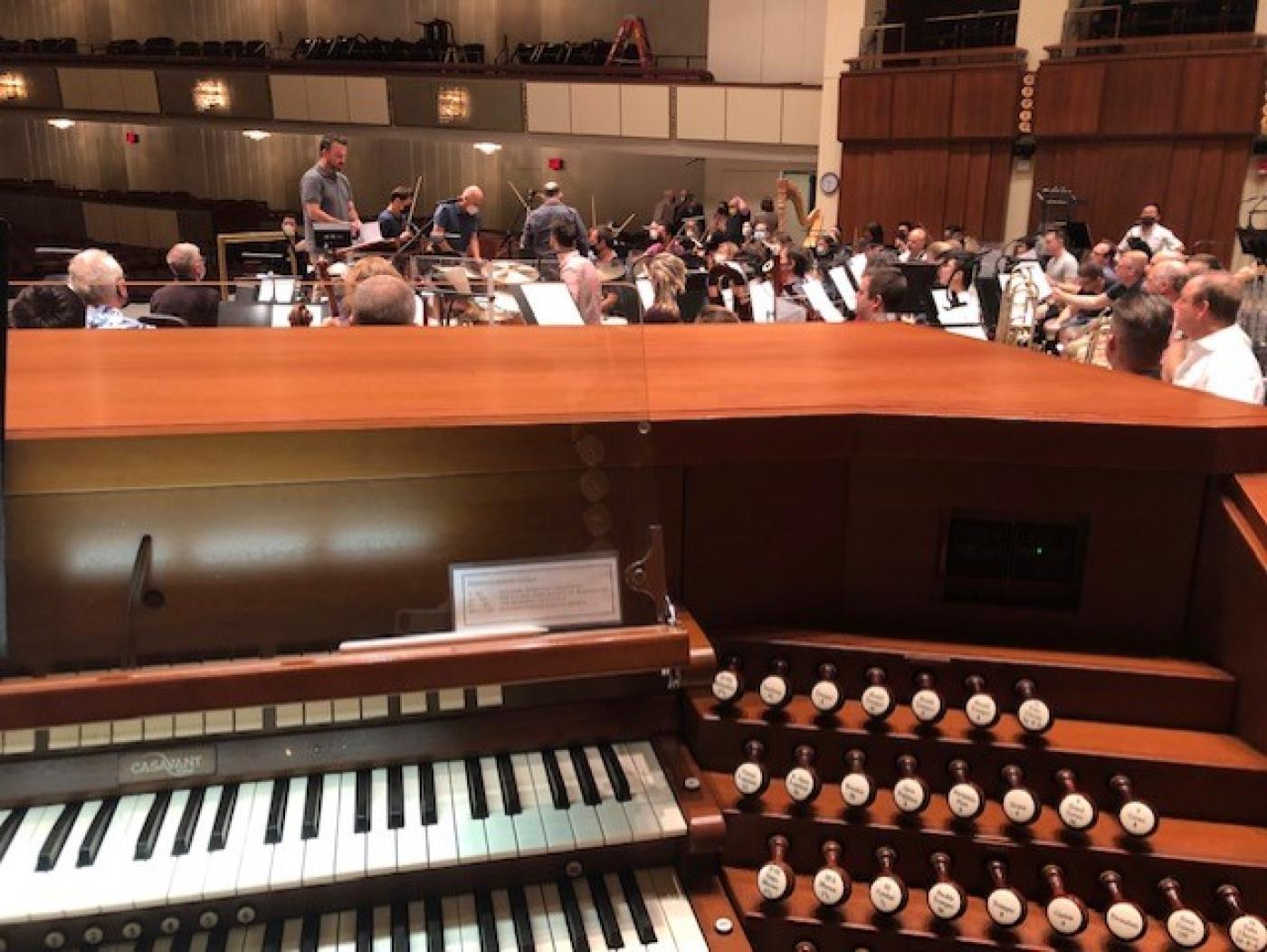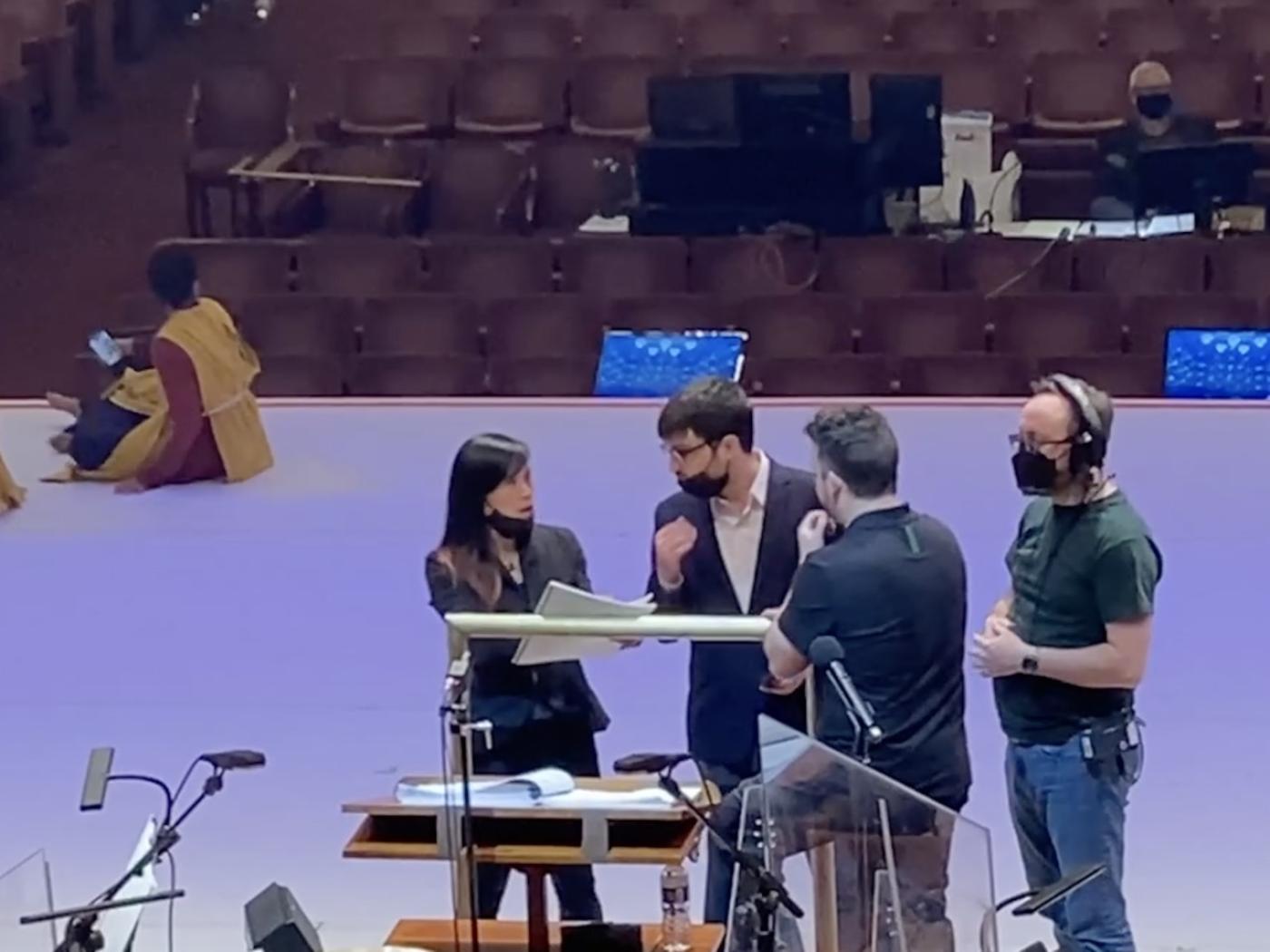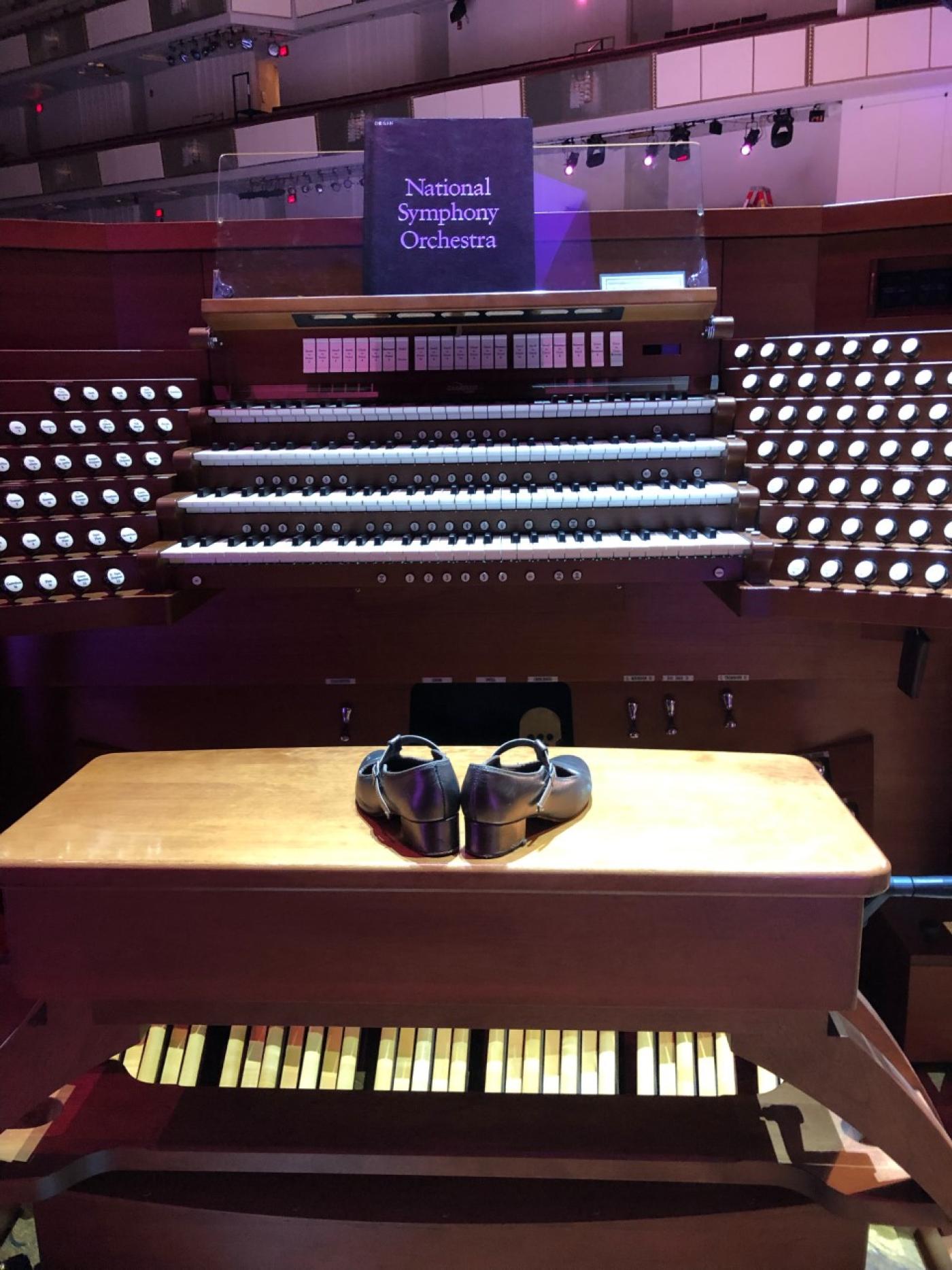1971. Like 2022, it was a time for soul-searching. Musicals like Godspell and Jesus Christ Superstar tried to make sense of an America in turmoil. John and Robert Kennedy and Martin Luther King had been assassinated; students had been gunned down at Kent State; the Vietnam war raged on.
In the midst of this zeitgeist, Jackie Kennedy asked family friend Leonard Bernstein to compose a dedicatory piece for the opening of the John F. Kennedy Center for the Performing Arts. Bernstein’s response was MASS: A Theater Piece for Singers, Players and Dancers.
Using the framework of the Latin Mass (a nod to the first Catholic US president), Bernstein, with input from other artists, wove an eclectic mix of Broadway, jazz, rock, Hebrew and folk tropes into the traditional liturgy. For example, the show opens with taped music contrasting with Bernstein’s very human “Simple Song.” MASS’ Credo movement features lyrics by Paul Simon: “Half the people are stoned/and the other half are waiting for the next election.” The Dona Nobis Pacem morphs into a demand to “give us peace NOW.” Finally, a child soprano brings hope to the “congregation” as the celebrant sheds his golden robes and becomes one of the people, declaring, “the Mass is ended, go in peace.”
Bernstein, who was on the FBI’s naughty list for his liberal views, declared that MASS served as a “reaffirmation of faith.” The premiere took place on September 8, 1971, with choreography by Alvin Ailey and over 200 participants on stage, including the NSO and the Norman Scribner Choir. The audience gave it a 30-minute standing ovation.
So here we are, 51 years later, in another turbulent time. MASS’ message of hope, multiculturalism and inclusivity is again a much-needed balm to the soul. I’m curious to see how the new Kennedy Center production will address the challenge of our more cynical times.
Performances are September 15, 17 and 18 in the Concert Hall.
James Gaffigan conducts the National Symphony Orchestra. 2020 Marian Anderson Award winner Will Liverman is the Celebrant. One of WETA Classical's hosts, Julie Huang Tucker, was selected to play the organ for this presentation of the MASS.
Here she shares her experience in playing this historic work on the great Kennedy Center organ.
At the first orchestra rehearsal, I perched tensely at the edge of the organ bench behind the four-manual fort of the Casavant console. A striking D-major chord from the electric guitar interrupted the pre-recorded antiphon (Kyrie Eleison) and Will Liverman (brilliant in his role as the Celebrant) began his opening solo, “Sing God a Simple Song.” The first strains of the strings enveloped me in what I can only describe as a healing frequency. At measure 26, hands poised over the keyboard, toes hovering over the pedalboard, I joined them.
I was not expecting to be playing organ for the Bernstein “Mass” this weekend, if for no other reason than a couple weeks prior, I wasn’t even sure I’d be playing organ again at all. I was burned out of church music after serving as music director at a church for ten years. I was done with church and organ.
But the universe insisted: “Not yet. Don’t be so dramatic — or at least, save it for the stage.” (That’s how I interpreted the invitation from the National Symphony Orchestra Personnel Manager, at any rate). It just so happens there’s an eclectic work about the grandiose, dysfunctional spectacle that is organized religion, with anti-establishment themes, and how idealism corrodes into a crisis of faith. (Spoiler alert: hope is restored at the end). There was an altogether different breed of church service awaiting me.

“Mass” by Leonard Bernstein was commissioned in troubling times to open the Kennedy Center in 1971 and is now being revived to celebrate its 50th anniversary. In this troubling time in my own life, I’ve found the undertaking to be an intense, immersive, gratifying experience. I started my work by studying the score, listening to recordings, practicing the music, and registering the organ (there are times the organist needs to pull out all the stops, namely at spots Bernstein marks with a not-so-subtle triple forte). Then I joined forces with the many other disparate moving parts, no easy feat, especially as much of the score was written to sound intentionally discordant and dissonant. Maestro James Gaffigan has been more than equal to the task of expertly commandeering the crew, consisting of orchestra, rock band, main soloist, musical theater singers, adult and children’s choirs, and dancers. Notable also for this production are the stagehands, and lighting and sound technicians (the pre-recorded music in this piece is just one more tricky element; apparently, Bernstein felt you can’t have too many).

At last night’s dress rehearsal, we finally ran everything in its bombastic, tongue-in-cheek, sensory, chaotic, meditative, mixed emotion, mixed meter, over-the-top sequence. It reminded me of the messy, broken, imperfect, but very real world in which we live. And that my response, should I so choose, can still be to make it a little better through creating and sharing meaningful music. The organ is one of the final instruments that can be heard at the end of the piece, which closes quietly, steeping us in its soft reassurance. “The mass is ended; go in peace,” intones a pre-recorded voice concluding the work. And so that’s just what I did.

WETA's James Jacobs recalls his experience of Bernstein's MASS in 1974
It was three months to the day before my thirteenth birthday when I saw Bernstein’s MASS at UC Berkeley’s Zellerbach Hall in May 1974. While a version of the work with greatly reduced forces (which Bernstein called “mini-Mass”) had been produced in Los Angeles the previous year, this was its first full-scale production on the West Coast, with well over 200 performers, including a couple of friends of mine in the San Francisco Boys Chorus. I was already familiar with the piece, having checked out the recording of the original Kennedy Center production from the Berkeley Public Library and listened to it obsessively. On the way to the theater, I passed by Wheeler Hall, where a student sit-in was taking place, and a veritable army of police officers were swarming the campus; I saw one protester bleeding profusely from his head. I passed by Hare Krishna followers chanting and playing percussion, and street evangelists urging passers-by to find Jesus and repent. There were street musicians on practically every corner and all over Sproul Plaza, playing everything from Bach to jazz to African drumming to folk singers with guitars. It seemed as if MASS was flowing directly from the streets of Berkeley onto the stage, grappling with the issues of faith and cultural confusion that we are still confronting a half century later. For my 12-year-old self, who had already participated in anti war protests and witnessed racial strife on a daily basis as Berkeley tried valiantly to integrate its schools, and whose parents never really did decide if we were Jewish or Christian or nothing at all, MASS seemed like one of the only works of art that spoke to my own life as a kid, and it still does today.
WETA Passport
Stream tens of thousands of hours of your PBS and local favorites with WETA Passport whenever and wherever you want. Catch up on a single episode or binge-watch full seasons before they air on TV.